I’m not a big fan of the whole 2.0 /3.0 theme, but I have to accept the fact that Web 2.0 and related concepts have become commonplace, everyday terms that today we’re taking for granted. Enterprise 2.0, on the other hand is far more debated. Definitions range from loosely saying “Web 2.0 tools in the Enterprise” through Harvard Prof Andrew McAfee’s “Use of emergent social software platforms within companies, or between companies and their partners or customers” to MR Rangaswami’s much broader “ synergy of a new set of technologies , development models and delivery methods that are used to develop business software and deliver it to users.” Then we have a set of attempts to simply “get to the point”, without long academic debate, like lightweight software, or Meet Charlie, a simple yet effective slideshow that personalizes the story.
One thing there is agreement about is that there is no agreement – in terms of a definition, that is… but that does not prevent us from attending conferences like Enterprise 2.0 or Office 2.0, and more importantly, businesses from embracing Enterprise 2.0 to varying degrees. It is happening, whether we have a “final” definition or not.
However, I really don’t think we’re ready for Enterprise 3.0 – not now, not ever. There are quite a few articles on the subject, but they all come from the same author, Sramana Mitra (except for two old ZDNet articles quoting Shai Agassi and JP Rangaswami). Sramana has certainly “cornered” the market – except there really is no “market” if she’s the only one using the term. Her definition: Enterprise 3.0 = SaaS + EE. What’s EE? Extended Enterprise:
The modern enterprise is no longer one, monolithic organization. Customers, Partners, Suppliers, Outsourcers, Distributors, Resellers, … all kinds of entities extend and expand the boundaries of the enterprise, and make “collaboration” and “sharing” important.
Let’s take some examples. The Salesforce needs to share leads with distributors and resellers. The Product Design team needs to share CAD files with parts suppliers. Customers and Vendors need to share workspace often. Consultants, Contractors, Outsourcers often need to seamlessly participate in the workflow of a project, share files, upload information. All this, across a secure, seamlessly authenticated system.
Sounds familiar? Of course, back in the 90’s this is what we called (Extended) Supply Chain. I’m not sure we need to create another label just yet. But if and when something is so significant that it deserves a new name, let’s get a bit more creative … I’m with fellow Enterprise Irregular Thomas Otter, who humorously ranted:
- The car isn’t called horse 2.0.
- The lightbulb isn’t called candle 2.0
- Fax (Facsimile) isn’t called letter 2.0
If we are so innovative in the 21st century, the least we can do is to think of some new terms that inspire. Think ROBOT, Television, Velcro, Radio, even scuba (Self-Contained Underwater-Breathing Apparatus) … If this stuff is really that innovative then it deserves a proper word.
Back to Sramana and “Enterprise 3.0”: next week she will be moderating a panel discussion of the MIT Club of Northern California, with the ambitious title: Enterprise 3.0: Where Is It Headed?. Excerpt from the event description:
Collaboration, wikis, blogs and social networking are new tools igniting the enterprise market. Service based models are emerging as alternates to desktop software and enterprise servers. In March 2007, Cisco acquired WebEx for $3.2 billion, stepping in with a splash in the enterprise collaboration space. Meanwhile, Google has assembled a whole suite of word processing, presentation, and spreadsheet tools and just acquired Postini, an email management company. Microsoft has been adding collaboration and knowledge management capabilities to its Windows Platform and just announced plans to offer Web-based versions of its applications. Then, there are exciting startups that are offering alternatives.
This panel will explore the impact of Web 2.0 on the prosumer i.e. the individual user in the enterprise and the evolution and integration of office tools, communication and collaboration technologies.
Sounds vintage Enterprise 2.0, if you ask me.![]() That said, I think it’s an exciting subject, and they will certainly have a first-rate panel:
That said, I think it’s an exciting subject, and they will certainly have a first-rate panel:
- Tom Cole, General Partner, Trinity Ventures
- Cliff Reeves, GM, Emerging Business Unit Team, Microsoft
- Jonathan Rochelle, Product Manager, Google Docs and Spreadsheets
Sridhar Vembu, Founder, CEO, Zoho / Adventnetlast minute change: the event site now lists Tim Harvey, VP Planning, Webex, Cisco Systems instead of Sridhar Vembu.
Whatever we call it, I plan to be there. If you are reading this blog, chances are you’re also interested in these subjects, so if you happen to be in the Bay Area Wednesday evening, perhaps I’ll see you there. Here’s the registration page. (Warning: the form is way too long, asking for way too much information – vintage 1.0 style![]() )
)
Additional reading: Open Gardens, Portals and KM, Anne Zelenka, Luis Suarez, the FASTForward Blog, Read/WriteWeb, Chris Pirillo, Fake Steve Jobs ![]() , just to name a few…
, just to name a few…
Update (8/21): as much as I hate this 2.0-3.0 labeling, I like Don Dodge’s new formula: Web 2.0 = web app + 2 founders + 0 revenue




 For half an hour or so I felt I was back at University at Software 2007 – in Professor Hasso Plattner’s class. That’s because his keynote was a compressed version of his recent SAPPHIRE 07 speech, which in turn was an “offsite class” for his Stanford students – literally so, he flew the entire class out to Atlanta. To make his point, he used the blackboard-metaphor, with chalked handwriting (and dressed in matching black
For half an hour or so I felt I was back at University at Software 2007 – in Professor Hasso Plattner’s class. That’s because his keynote was a compressed version of his recent SAPPHIRE 07 speech, which in turn was an “offsite class” for his Stanford students – literally so, he flew the entire class out to Atlanta. To make his point, he used the blackboard-metaphor, with chalked handwriting (and dressed in matching black ).
).

 (Updated)
(Updated)




 ), but that carries the risk of the Playbook becoming just another discussion forum. Perhaps we should all heed the advice under
), but that carries the risk of the Playbook becoming just another discussion forum. Perhaps we should all heed the advice under  My regular readers know I’m a big
My regular readers know I’m a big 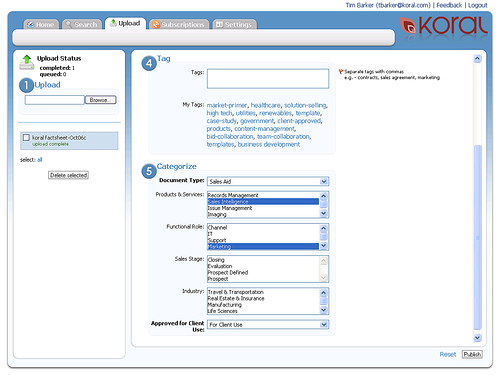
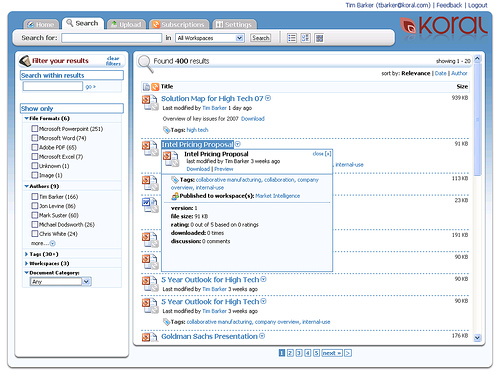
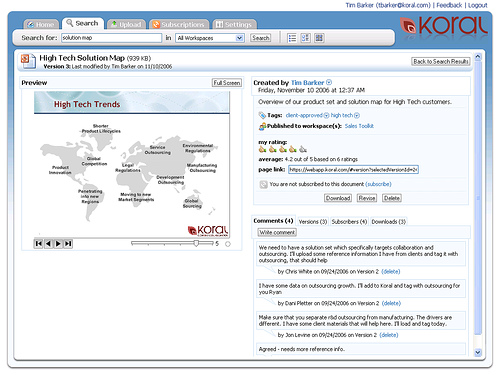
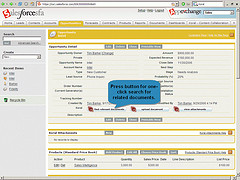
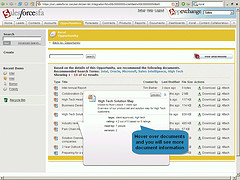

Recent Comments